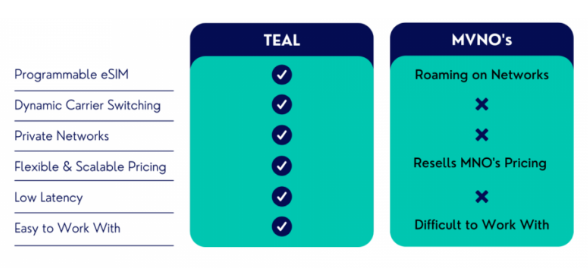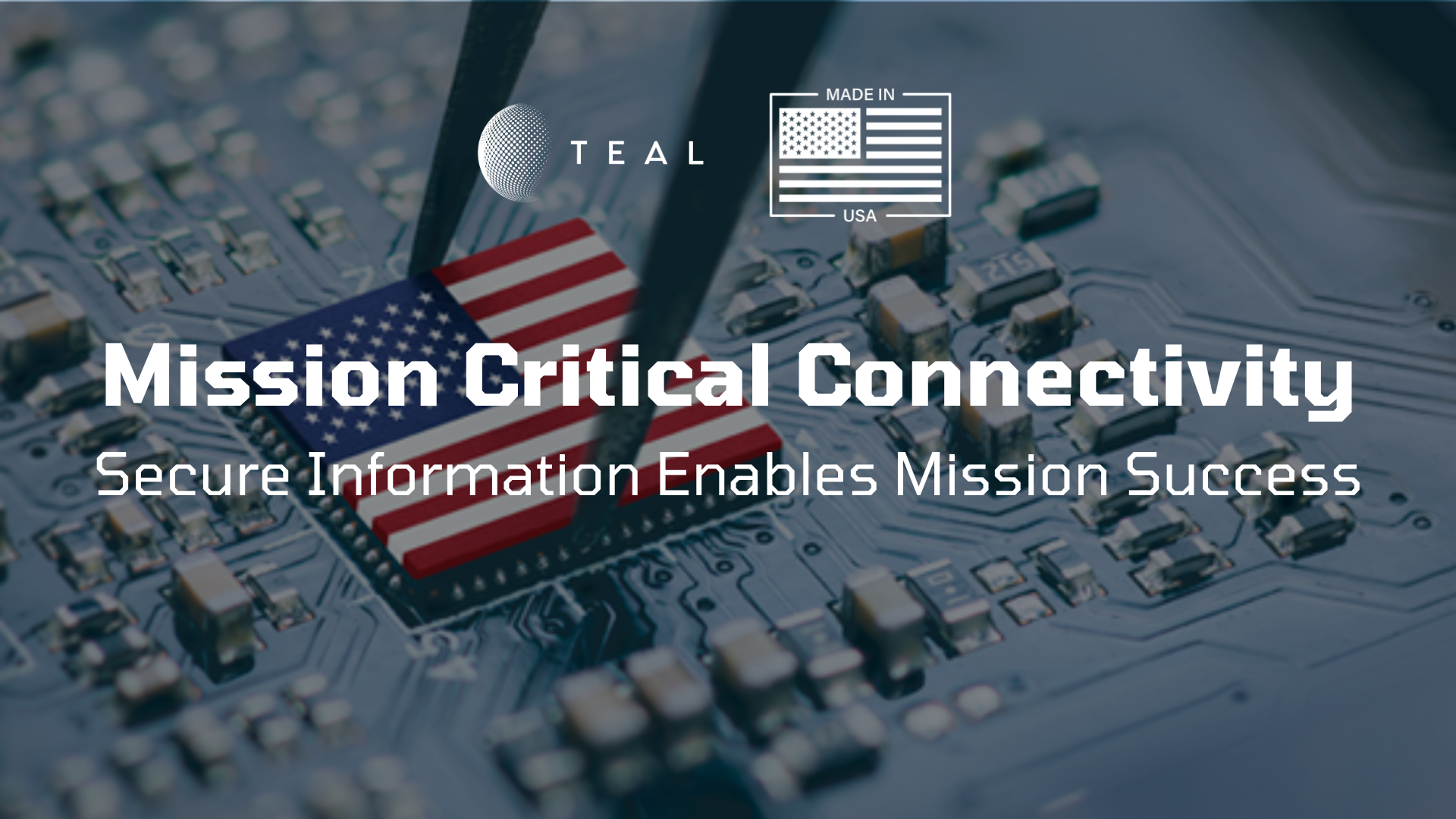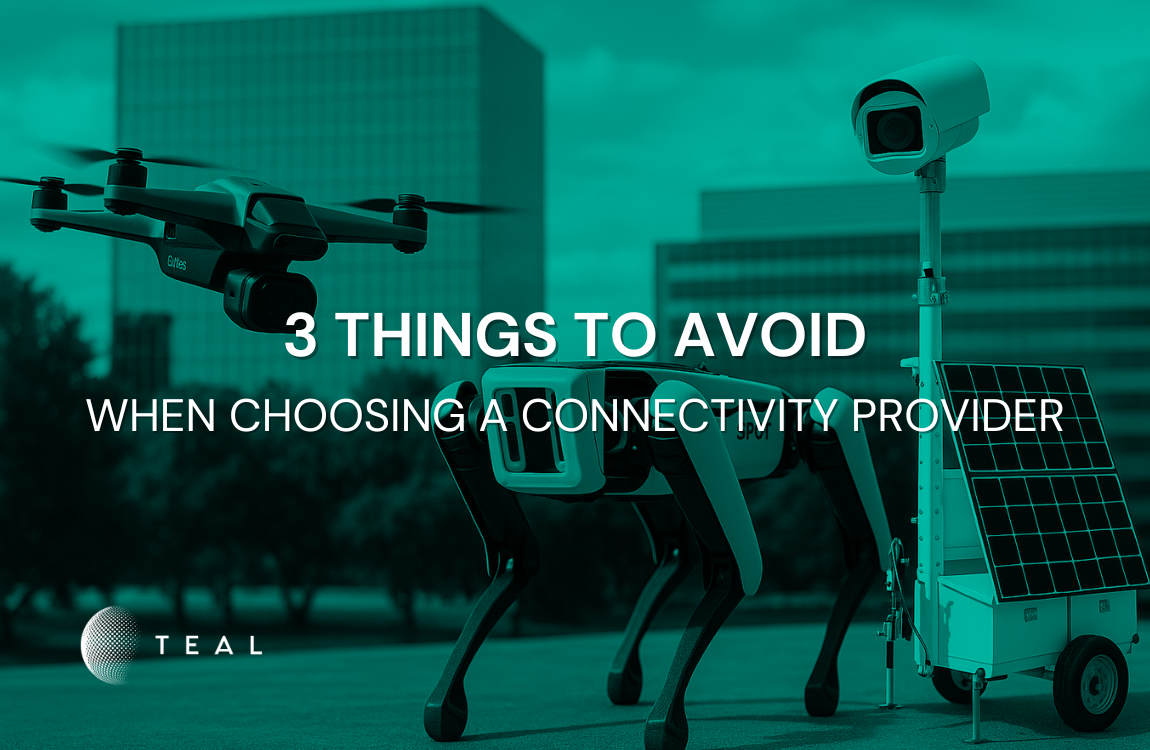The Risks of Counterfeit eSIM Solutions and the Advantages of True Programmable Connectivity for Enterprises

Be cautious of MVNOs touting programmable eSIM technology as part of their offerings, as making the wrong selection when it comes to choosing a connectivity provider can have un-anticipated consequences for your business. Such claims can be misleading to businesses that don’t understand the differences between a cloud based eSIM platform and what an MVNO provides.
An MVNO operates by leasing airtime (radio network) from Mobile Network Operators (MNOs), supplementing it with a virtual data network to manage data transfer. This involves initial data transmission via an MNO tower before routing through an MVNO’s data center. However, claims of being connectivity platforms by many MVNOs fall short due to their reliance on leased platforms, resulting in rigid and constrained service that depends heavily on external parties for modifications. This means that your business can get locked into a static, limited solution and any required changes will be challenging, if not, out of your control. Most MVNOs tout roaming eSIM, but the differences between roaming and native core network connectivity can have drastic impacts on the performance and reliability of your IoT deployments.
The Difference Between Roaming and Native Core Network Connectivity
The distinction between relying on roaming services versus utilizing native core network connectivity underscores the superiority of the latter. Roaming, while adequate for certain applications, cannot match the tailored infrastructure and enhanced performance that comes with native connectivity. Roaming services depend on borrowing from other providers’ network infrastructures, which can lead to connectivity, speed, and security issues. On the other hand, native core network connectivity, as offered through eSIM technologies like TEAL, grants direct access to specific MNO infrastructure, leading to notable improvements in service performance.
In the realm of roaming arrangements, MVNOs typically issue connectivity credentials based on the most cost-effective routing for their profit margin. This is due to the fact that their primary business model revolves around buying data at one price and selling it at a markup – effectively acting as data brokers. This setup can create barriers between MNOs and enterprises, limiting direct access to optimal network solutions.
Why True eSIM is the Only Connectivity Choice for High-Data IoT
Efficient and stable connectivity is crucial for mission critical IoT use cases, yet the promise of sustained high-speeds (exceeding 20 mb/s) by roaming solutions is often unattainable by MVNOs due to unpredictable latency issues. The time required for data to travel between computers hinges on numerous factors beyond the reach of any Mobile Virtual Network Operator (MVNO), leading to inconsistent service quality.
MVNOs replicate the data infrastructure of traditional Mobile Network Operators (MNOs) but face challenges with roaming agreements and latency, due to their limited data center capabilities. There’s just no way for an MVNO to reproduce the same robust infrastructure that MNOs have spent billions of dollars creating. TEAL, in contrast, bypasses the need for data centers altogether by directly linking customers to MNO infrastructure, offering enhanced performance and often more competitive pricing.
Carrier-switching capabilities touted by MVNOs are somewhat confusing, as they merely transition users between cell towers while the data center and often the or the user’s identity stays the same, creating the risk of a single point of failure and a lack of redundancy. Multi-IMSI (International Mobile Subscriber Identity) options, while offering the convenience of multiple network identities on one SIM, restrict users to a preset selection of networks without the flexibility for changes. This means that your business will be locked-in to a pre-selected networks and contracts with no ability to switch between or to connect onto additional networks if needed.
For IoT devices on “away” networks, the lack of prioritization can lead to inconsistent performance and high latency, detrimental to critical applications like video surveillance, fleet management, autonomous robotics, and Beyond Visual Line of Sight (BVLOS) drones. Despite attractive global coverage rates, the reality often falls short of expectations for mission-critical devices.
Native core connectivity, designed with IoT and Machine to Machine (M2M) devices in mind, guarantees steady, high-quality service across locations. The predictability of costs, absent the surprise of roaming fees, and the inherent control over connectivity infrastructure make it significantly more appealing for businesses, yielding a superior return on investment.

Learn how true eSIM technology is different and better than a Mobile Virtual Network Operator (MVNO)
The Superiority of True eSIM for Mission Critical IoT Connectivity
TEAL is not an MVNO and it’s important to understand how true eSIM technology is different than MVNO “Roaming eSIM” offerings. Unlike an MVNO, TEAL offers a cloud based eSIM platform, establishing a novel approach to IoT data network access. This technology circumvents traditional limitations by offering numerous signaling paths and network choices, ensuring persistent connectivity for IoT devices. TEAL’s eSIM technology puts the power in the customers’ hands, allowing for on-demand international network switching via over-the-air (OTA) updates. TEAL doesn’t just offer multi-carrier “access”, TEAL gives you control over what networks your IoT devices are connected to, ensuring always-on connectivity to critical edge devices.
For enterprises deploying IoT solutions, the autonomy and flexibility provided by true eSIM technology are unparalleled. It has transformed global device connectivity across multiple sectors by ensuring reliable, hassle-free connections for both manufacturers and users. TEAL’s wholly owned eSIM platform enables IoT companies to innovate and expand rapidly without depending on third parties, accelerating their time to market. Companies aiming to eliminate costly roaming charges now have a superior solution with TEAL’s eSIM technology, offering a streamlined platform for connecting IoT devices to global networks effortlessly.
Experience the Benefits of Native Core Connectivity!

TEAL’s OneChip eSIM cards provide native connectivity onto America’s three tier-1 carrier networks, with additional native support for carriers in Canada, the UK, and the EU, and soon, Mexico. This translates to the same experience as if you had a T-Mobile, Verizon, AT&T or other leading SIM in your device, offering superior performance compared to roaming or using data centers not operated by these carriers. Get access to 3500+ data networks worldwide at the click of a button with TEAL.
Order your eSIMs now!
Recent Posts
New Podcast! Space and Air Supremacy: The Role of Drones in Modern Warfare
Teal Communications Staff2025-06-25T20:15:23+00:00
Mission Critical Connectivity: Secure Information Ensures Mission Success
Teal Communications Staff2025-06-25T02:21:28+00:00
3 Things to Avoid When Choosing a Connectivity Provider
Teal Communications Staff2025-06-20T20:53:06+00:00




